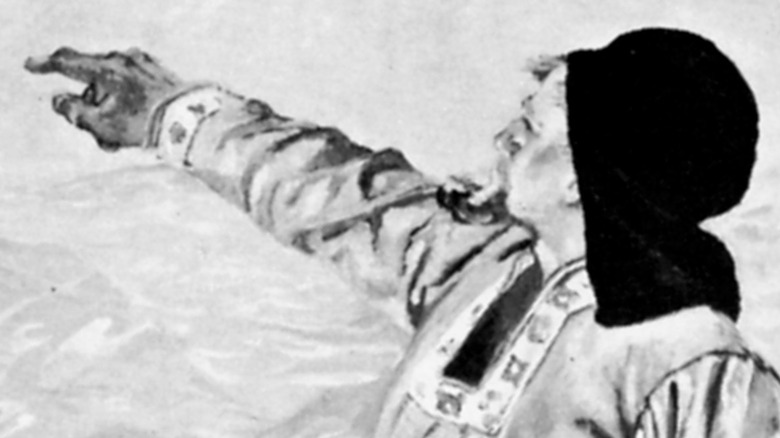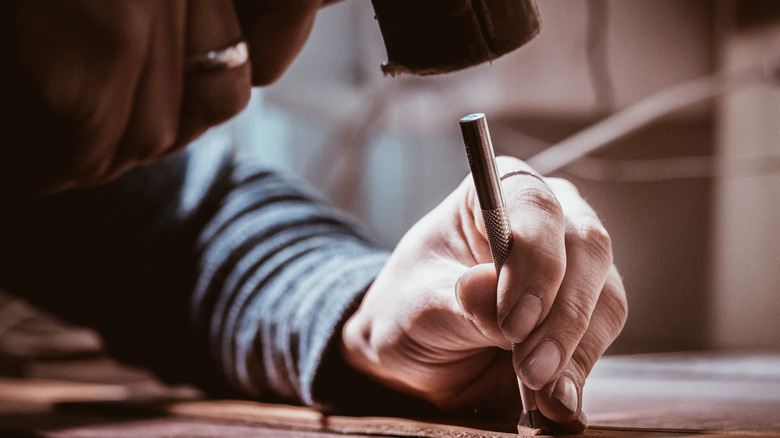
What Life Was Like As A Saddler In The Colonial Era
Europeans brought many non-native species across the Atlantic when they settled in North America, and perhaps none is more influential than the horse. While horses would dominate the landscape in the centuries to come, the animals were extremely expensive at the start of the colonial era and only available to the wealthiest families (via History). Saddlers had a lucrative trade thanks to their customers, who were exclusively the richest residents. As such, they could expect healthy profits as they matched the expensive tastes of their clients.
Saddlers needed to be skilled leatherworkers who could craft with multiple materials and styles. They needed to weigh the pros and cons of hog hide and steer hide depending on the type of rider purchasing the saddle. They needed to be able to create racing saddles for jockeys and sidesaddles for the women. They needed to make practical, sturdy saddles along with ornamental, decorative saddles. If a saddler had all these skills, they could live comfortably in colonial America.
Saddlers were respected members of society
According to Colonial Williamsburg, anyone who wanted to work in the saddle trade had to take up an apprenticeship sometime around the age of 13. Through this process, they would learn how to master the unique special knives and equipment required to make saddles and harnesses, including the half-moon-shaped round knife. Leather was then cut to specific measurements and patterns. Interestingly, these patterns were kept confidential, as they were what made one saddler unique from another — like a secret recipe. Saddlers did not make the wooden frame, hiring a specialist frame-maker or importing them from England.
Good saddlers needed a deep knowledge of their material, which they absorbed over time through experience. Hides can vary in texture, color, strength, and grain, and a saddler learned to match each hide with the job required. Saddlers could be successful and respected members of a colony, as they frequently worked with the upper echelons of society. While horses aren’t common methods of transportations for most Americans today, modern-day saddle-making is almost identical to the methods and materials used by their Colonial predecessors.

The Truth About The Medieval Nun With Blue Teeth

Creation Myths From World Religions Explained

Why Beer Was The Reason The Pilgrims Landed On Cape Cod

What You Didn't Know About Martin Luther King Jr.'s Love For Star Trek

The Untold Truth Of Sirhan Sirhan

The Truth About The Lost Leonardo's Dianne Modestini

The Truth About Leif Erikson's Famed Journey To Vinland

Olympic Sport Climbing: Everything You Need To Know Before Watching

Here's How Serial Killer Jerry Brudos Was Caught

The Creepiest Tales Of Island Ghosts

























